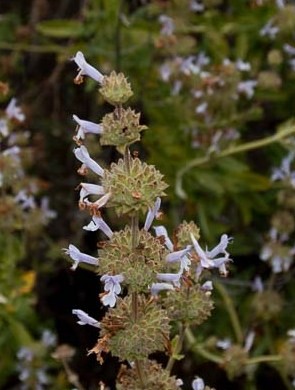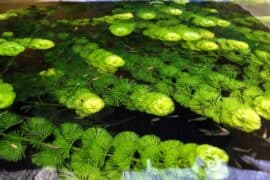"Black sage "
(Salvia mellifera)

Description
Salvia mellifera (black sage, also known as seel by the Mahuna) is a small, highly aromatic, evergreen shrub of the genus Salvia (the sages) native to California, and Baja California, Mexico. It is common in the coastal sage scrub of Southern California and northern Baja California. Black sage has a dark appearance, especially during drought. Black sage is a perennial shrub that grows approximately 1–2 meters (3.3–6.6 ft) tall. It is covered with simple hairs with some glandular hairs, which makes it highly aromatic. The leaves are oblong-elliptic to obovate in shape and are about 2.5–7 cm (0.98–2.76 in) long. The upper surface of the leaf is somewhat glabrous, while the lower surface of the leaf is hairy. The inflorescence occurs in 1.6–4 cm (0.63–1.57 in) wide clusters. The flowers are usually a pale blue or lavender color, and rarely a pale rose color. The upper lip of the flower is 2-lobed. The style and stamens are slightly exerted. The fruit produced by the black sage is a schizocarp composed of four 2–3 mm (0.079–0.118 in) brown nutlets. Black sage grows in the coastal sage scrub and lower chaparral plant communities. It occurs from sea level to 1,200 m (3,900 ft) elevation. Black sage is able to grow on a variety of different soils, including sandstone, shale, granite, serpentinite, and gabbro or basalt. It is semi-deciduous, depending on the location and severity of drought, shallow rooted, and drought tolerant by leaf curling rather than drought-avoiding through leaf drop. Black sage readily hybridizes with three other coastal scrub Salvias: Salvia apiana (white sage), Salvia leucophylla, and Salvia clevelandii. It rarely hybridizes with the annuals Salvia columbariae and Salvia carduacea.
Taxonomic tree:







